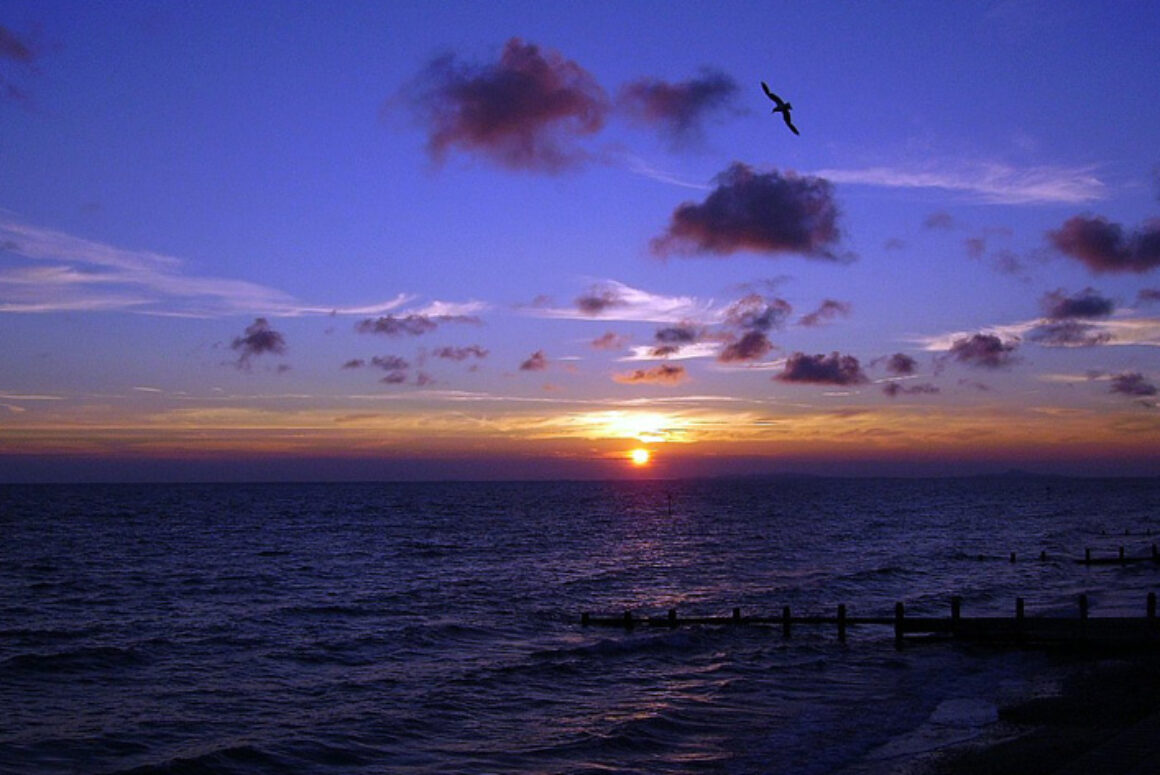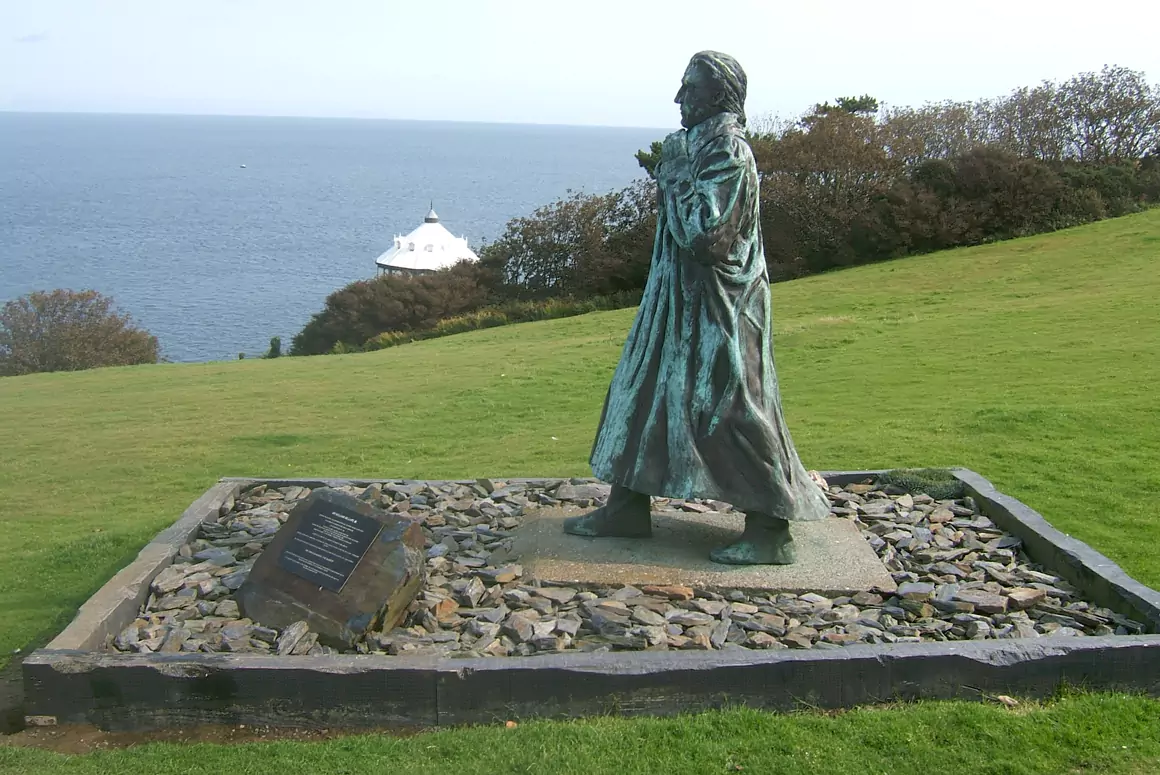![]()
I arrived in Tywyn by bus. Lloyds Bus Route #30 from Dolgellau on the A473. I had newly acquired friends to visit and I was being drawn by The Talyllyn Railway – Rheilffordd Talyllyn. From Tywyn came the inspiration of the famous Skarloey Railway Series. Very fond memories rolled through my mind of collecting engines, assembling tracks, of shunting Thomas, James, Edward, Percy, Daisy and the rest all around the playroom floor with my children, so it was a thrill to see the names carrying through in some fashion to the train engines here at the real station: Talyllyn, Dolgoch, Douglas, Tom Rolt, Edward Thomas and Sir Haydn. These names are not random but all tell of this railway’s history.
Here the narrow gauge rail line is just over two feet in width. It was constructed in 1865 for the slate industry. Prior to this, transport was by horse and cart from the quarries at Bryn Eglwys quarries into Tywyn and onwards to Aberdyfi. Passenger service came later. But there were many economic ups and downs resulting in the purchase of the quarry and railway by Haydn Jones. Sir Haydn died in 1950. It was after this that the Talyllyn Railway Preservation Society was born. The first preserved narrow gauge railway of Wales. The first in the world to be preserved!
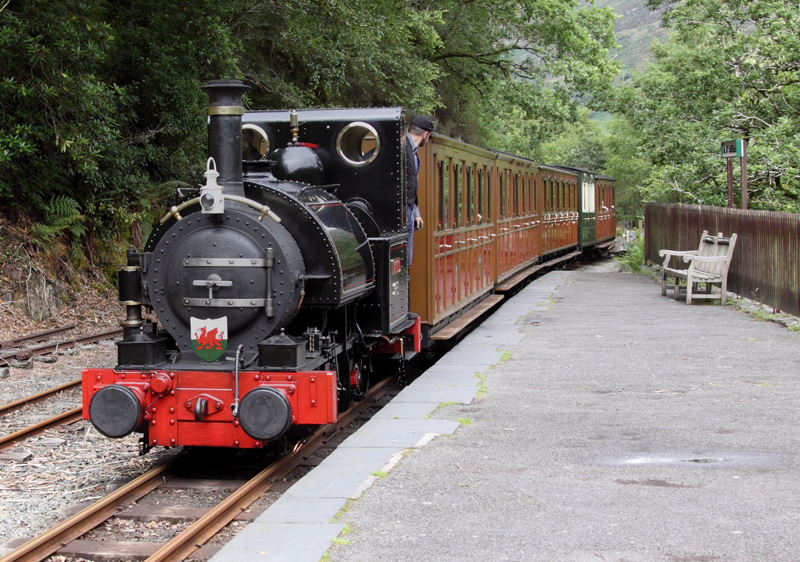
It was a magnificent experience on the steam-hauled trains chugging through the Fathew Valley here in southern Snowdonia, with Cadair Idris in view, sightings of Red Kites and Peregrine Falcons, delicate little linnets and the much larger cormorants gliding on the air currents, ancient woodlands and wildflowers. If only I could have foxgloves so tall and fuchsia pink growing in my home garden!
There are many stops along the way. Starting at Wharf Station with Pendre – Hendy – Fach Goch – Cynfal – Rhydyronen – Tynllwynhen – Brynglas – Dolgoch – Quarry Siding – Abergynolwyn and Nant Gwernol. Some of these stops offer the opportunity to get off and explore the walking trails. Dolgach has waterfalls to discover. Abergynolwyn is near Abergynolwyn Village, which was established for the slate quarrymen. From here is the access to the Dysynni Gorge Trail. This is also the closest stop to take the trail to Lake Talyllyn and Castell y Bere.
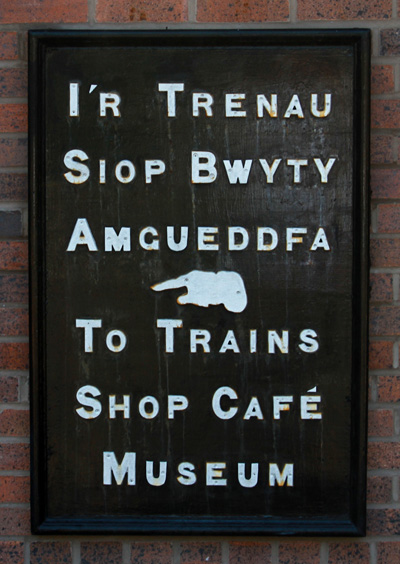
Castell y Bere was built by Llywelyn ap Iorwerth – Llywelyn the Great – in the 13th century and remained a Welsh strong hold for six decades until 1283. The architecture of the castle conforms to the mountainous land. This is a feature of a Welsh-designed and built castle, which is different from English-designed ones. At Nant Gwernol, the highest point and the end of the line, there are more forest trails.
Although, the seven-mile trip from Talyllyn Wharf Station to Nant Gwernol takes about 55 minutes, it can be a whole day of adventure with the exploration of these walks. For me, staying on and listening to the clatter of the wheels pulled by a 156-year-old locomotive, had me immersed in views intoxicating at one bend and calming at the next. Perfect.
Tywyn is in the heart of Cardigan Bay on the west coast of Wales and has always been some kind of hub. Once, it was also known as Towyn, but in 1968, a referendum was held to clarify the name’s pronunciation and spelling. The vote came in favour of Tywyn – a fully welsh word reflecting her coastline of seashore plus dunes. One kilometre into town from this seemingly endless beach, there is on College Green Street, the beautiful and ancient 12th century Romanesque styled church of St Cadfan’s Anglican. In the Year 516, the spot was chosen for the water well already there. The well became known for its healing properties. The church settlement (clas) under the missionary-ship of St Cadfan from Brittany grew, becoming a ‘mother church’ to those arising in the area as well as an ecclesiastical college for the monks – hence the street named College Green. It became a place of pilgrimage.
Over the centuries, there have been many architectural changes. Inside are 14th century effigies of a priest in vestments and a knight in armour. The history of the priest is unknown but the knight is said to be Gruffud ap Adda of Dolgoch. This effigy seems to weep when rain is imminent. And there is more. Two monoliths are seen here. Both 8th century. One has a hole and is a sundial. The other is even more remarkable and is of national importance because upon this stone, the engraving is the earliest known Welsh inscription. A writing of archaic Welsh. This is The Cadfan Stone. Its discovery came 1761 at a nearby pigsty- Bryn Paderau. This five-foot archaic artefact was being used as a gatepost! Once recognised and the value seen, it was brought into St Cadfan’s Church for all to learn about and admire.
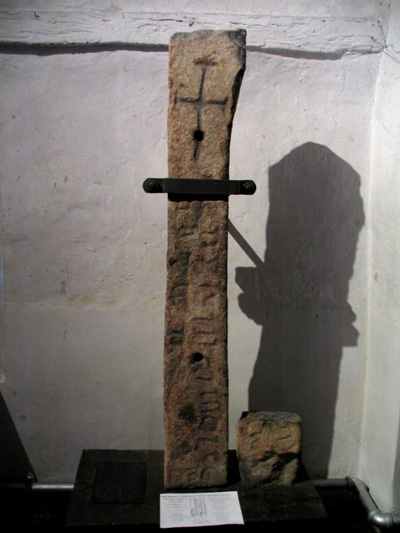
“the body of Cingen” …. CINGEN HELEN
“lies beneath” ….TRICET / NITANAM
“the tomb … four” …..MOLT / PE/TUAR
” Egryn, Mallteg, Gwaddian” …TENGRUIN MALTE(C) GU/ADGAN
“…….” …….. M(C)/ARTR
“together with Dyfod and Marciau” ……..ANTERUNC DUBUT MARCIAU
(Ancient inscription with modern, English translation)
I left Tywyn the same way I arrived. By bus. Lloyds Bus # X29. Leaving St Cadfan’s Church on College Green, I meandered along High Street, each minute thinking that I’d wait at the next stop and board the bus there. But it was a sunny day and lovely walking through this quiet, history-plump town. Finally, when I boarded, my thoughts turned to how much was still left to see and do in this surprising town – and what I wanted to re-do!
What would I re-do?
~ Definitely walk along the beach with limitless time, staying until the sun sets.
Still to do?
~ Go to the Magic Lantern Cinema on Corbet Square. Built in 1893 as the Tywyn Assembly Rooms, it began showing films in 1901.
~ Explore the Dysynni valley with its river, the gorge itself and Broad Water.
~ Dip my fingers in Tal-y-llyn Lake. I first gazed down on it as I drove along the route A487 – the Corris Road. When I return, I will find a spot on its shore, not to fish (I’m told the fishing is excellent) but to immerse myself in its palpable stillness.
Getting there:
By train: By train from Machynlleth Rail Station.
By car: The A473 south from Dolgellau or A493 west from Machynlleth.
By bus: Route # 30 south from Dolgellau. Route # X29 west from Machynlleth.


